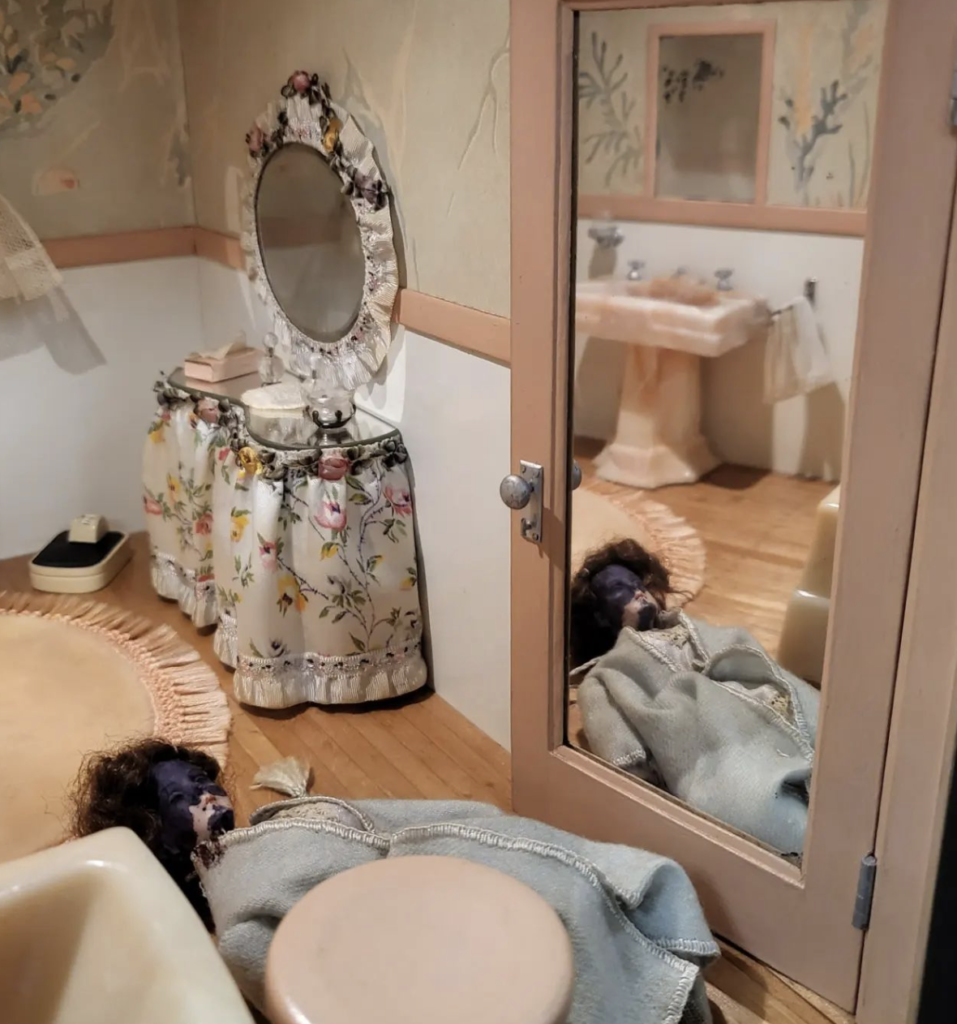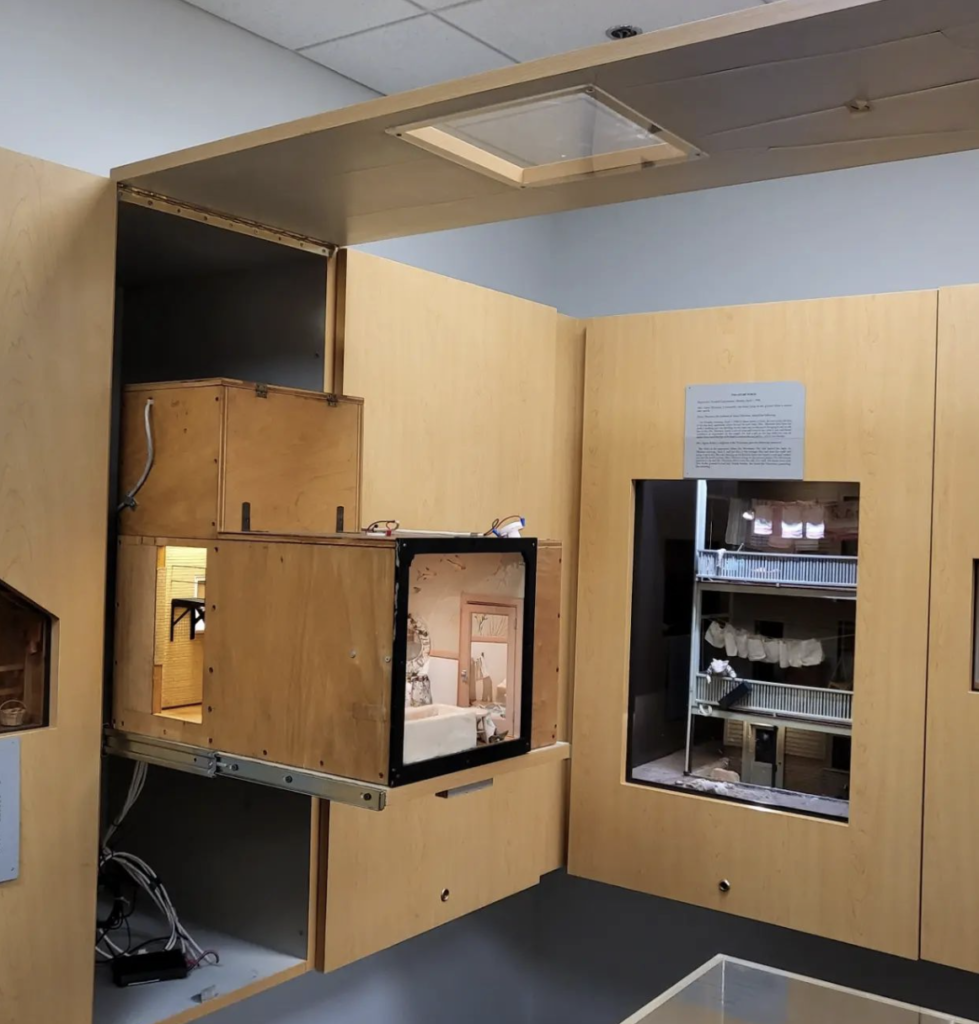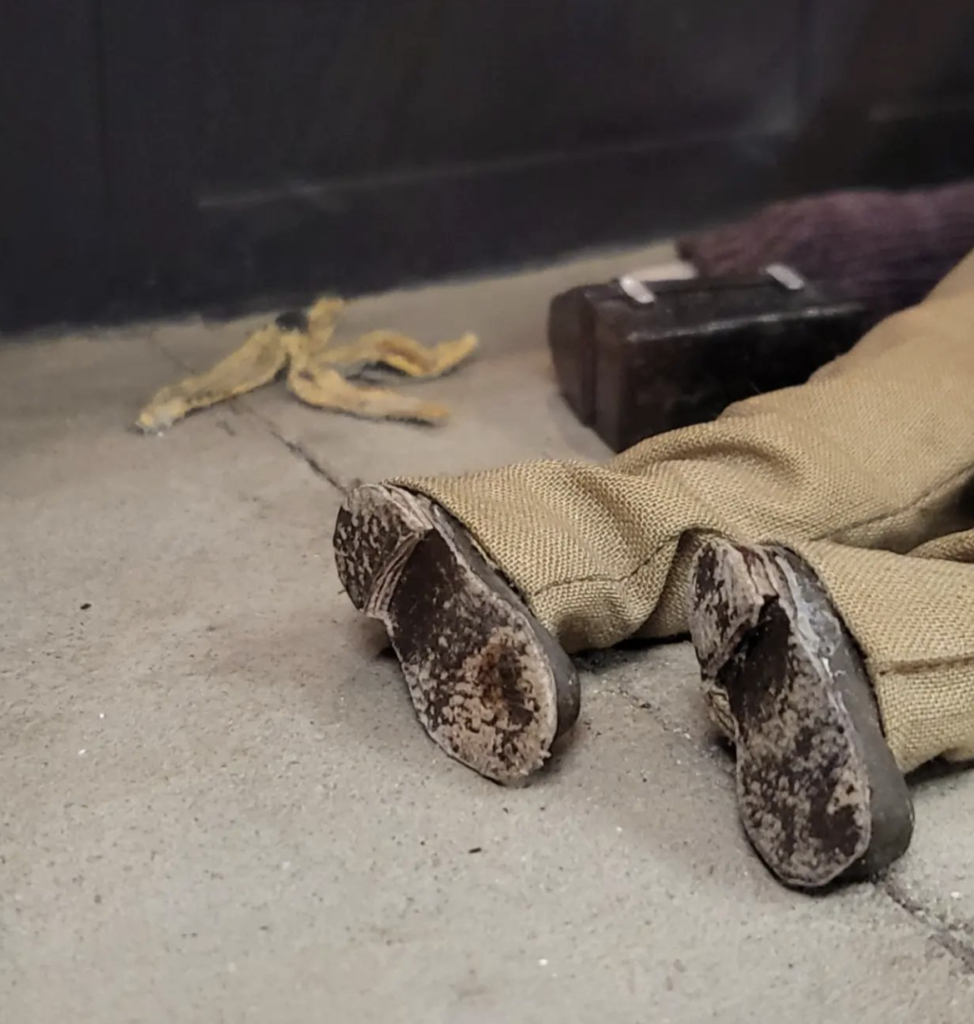Came the day I found myself in the Office of the Chief Medical Examiner, in Baltimore, Maryland.
Back up.
Months ago, I built an intricate scale model of a crime scene.
Back up further.
In 2020, as my mother was in her final days, I needed a way to fill the endless time after she was no longer conscious. When I was both alert for, and dreading, her final breath. I began researching the Hinterkaifeck case- an unsolved murder from 1922. And I have never stopped.
Back up further.
Ten years ago, I came across some images online of tiny scenes called the Nutshell Studies of Unexplained Death. They were built by Frances Glessner Lee, a complicated woman who stubborned her way into a world that wanted desperately to deny her an education, a profession, a life. She’s colloquially known as the mother of American forensic science. She engaged in a research-based making practice that produced spectacularly detailed, and painfully human, scale models of death scenes.
Go forward a little.
In 2015, I began teaching my art students about the Nutshells. They’d choose an unsolved case, research it, and build a scale model of the scene. Some were good. Many were just okay. But some were spectacular.
In 2017 I began building life-sized installation art pieces which dealt with missing people; the missing missing, as Kenna Quinet calls them. The folks dismissed by officialdom because of race, profession, or addiction. Those deemed less missing, and less missed. There’s a clear genealogical line to this work from the Nutshells- they were never far out of mind.
Finally, in 2022, I built my first version of a Nutshell. It came out of that research into Hinterkaifeck, begun when I was desperate to feel something- anything- other than the anticipation of grief. And it came when I got to a point where I was floundering in the research, and needed a way to break through to some kind of understanding. The model allows me to see the spaces in which the Gruber family lived, and died- and how the confines of their home affected their deaths.
I’m part of a community online, a group comprised mostly of women who are interested in unsolved crimes. It is, you may be surprised to learn, one of the kindest and most supportive places on the internet. I thought they’d be interested in what I’d made, so I posted images and video of my model there.
This led to a conversation with a person who turned out to be the expert on Frances Glessner Lee and her work. Bruce Goldfarb is the curator of the Nutshells- he oversees their care, and guards their secrets, at the Office of the Chief Medical Examiner (OCME) in Baltimore. He’s also the author of 18 Tiny Deaths, the definitive biography of Frances Glessner Lee and her work.
Goldfarb invited me to see the Nutshells. Which is how I found myself, in the hot wet summer of 2022, standing in a small back room at the OCME, stunned into incoherence by the objects surrounding me.
Goldfarb understands these objects, and their maker, better than anyone living. And he guards them well. No secrets will be revealed. Before we meet, Goldfarb warns me that people can’t resist trying to solve the nutshells. I try to keep this in mind while moving between them, getting caught in them. But he’s right; they’re irresistible. It’s impossible to look away from them as stories. As puzzles to be solved.
I find myself occupying a layered subject position, standing in this strange room full of strange rooms. I’m watching my partner, who has no interest in crime or forensics or even in art, really, but who has come along because it’s an adventure, and he’s nothing if not supportive. He’s entranced. He’s maybe slightly terrorized. I’m also watching myself watch him- and at the same time, being pulled into the space of the Nutshells. I’m viewer, voyeur, participant. The Nutshells’ space expands and consumes everything, and everyone, around them.
Everyone wants a clean narrative. Introduction, rising action, climax, denouement. You won’t get that from the Nutshells. They’re moments in time, caught in the aftermath of something- an event, a series of actions that led to an accident, or a murder. What you see is what’s left; you have to try to reconstruct the story from the scene in front of you here and now. Glessner Lee built the ending. You have to find the beginning.
Goldfarb opens the cabinet containing “Pink Bathroom.” It has its own secret: through the window of the bathroom, you can see a slice of wall, and a hint of a fire escape. Just enough to know that this bathroom is in an urban environment, that there are (or should be) neighbors all around. Once the cabinet is opened, the rest of the scene is revealed- an air shaft, with windows. The fire escape extends up and down.
None of this was meant to be seen. But it’s there. And it says something about Glessner Lee’s craftsmanship, and her obsessive intensity. It would have been easier not to build that air shaft. Glessner Lee was thorough- but she only shows us what we need to see. There’s just enough information to discover the truth- if we know what to look for, and how to interpret what we find.


True crime people (I hesitate to call us “fans,” which implies a species of admiration, or spectatorship, which I find distasteful) talk about “going down the rabbit hole”- a process in which a case captures your imagination, takes you hostage. You begin digging, relentlessly looking for more information, any tiny clue, that could solve the puzzle. What did that rope mean? Why was that towel there? Where was the final bullet casing? Wherever you are- eating breakfast, sitting through a faculty meeting, walking the dog- your brain is in the case, among its warrens and endless turnings.
Each Nutshell is a rabbit hole in itself. It contains worlds- perhaps made more compelling because they are so delicately empathetic. The figures are dolls- fragile toys, playthings for children. Recontextualized into depictions of adults, whose lives are over. The stories aren’t true, but they feel true, because the people in them look like us. They’re fictions, but they have names. They have professions. They are often (not always) depicted in their own domestic spaces. The spaces where they should be safe.
Images within images. I become weirdly convinced that Glessner Lee played a game with the images contained in the Nutshells. The paintings on the walls, the printed calendars, are all trying to tell us something. In one Nutshell, a painting of a fox is displayed. A fox in the henhouse? Nothing in art is accidental (though Glessner Lee did not consider herself an artist; it’s difficult to find another language with which to describe her constructions). Everything is a choice. Every detail of a wound, of the wallpaper, of the most prosaic things which make up a life. And which are left behind.
I am immeasurably moved by one figure’s shoes. He’s depicted in two spaces- another double consciousness- on the ground outside a saloon and later, in a jail cell. He’s a laborer. Even if you couldn’t tell by his clothes, and his lunchbox, you could tell by his shoes- the soles are worn down. You can see the shine of deliberate scuffing- the result of wearing down the tiny soles so that these shoes which have never known pavement will tell us something about the figure wearing them.

I can’t get enough. I am consumed. But eventually we have to walk back into the world.
In the rental car, on the way back to our DC hotel, I am overwhelmed. Exhausted by looking. I fall asleep, into that immediate REM abyss, and don’t wake until we’re pulling into the garage. I’ve lost time. My head is still back in the shabby-genteel confines of Dark Bathroom. It’s a space I recognize- a once-grand home, sectioned off into apartments- and an object to admire. And I’m haunted by it- not in any supernatural way, but in the way Avery Gordon describes haunting:
“…not a case of dead or missing persons sui generis but of the ghost as a social figure. It is often a case of inarticulate experiences, of symptoms and screen memories, of spiraling affects, of more than one story at a time…it is a case of modernity’s violence and wounds, and a case of the haunting reminder of the complex social relations in which we live.”
What Glesnner Lee built were spaces in which the dead do not speak, but their environments function as their ghosts. Their residues. Here is the book someone left open on the coffee table, because they expected to pick it back up. There is the table, set for a breakfast no one will ever make. We are left in the dissonance between the world as it is, and the world they expected to be.